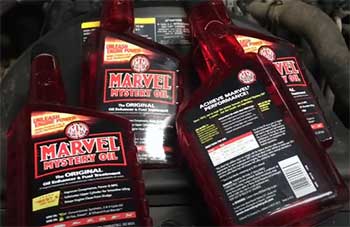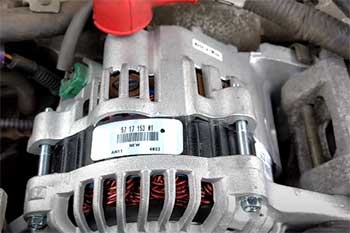Let me tell you why I’m sold on MicroGard air filters. As a car enthusiast who’s spent countless hours tinkering under the hood, I’ve learned that a quality air filter is your engine’s best friend.
MicroGard delivers top-notch filtration, keeping dust and debris out while letting your engine breathe easy. It’s affordable, reliable, and built to last, making it a no-brainer for anyone who cares about their vehicle’s performance.
Trust me, swapping in a MicroGard air filter is a small investment for big engine protection. You won’t regret it.
My Journey With MicroGard Air Filters
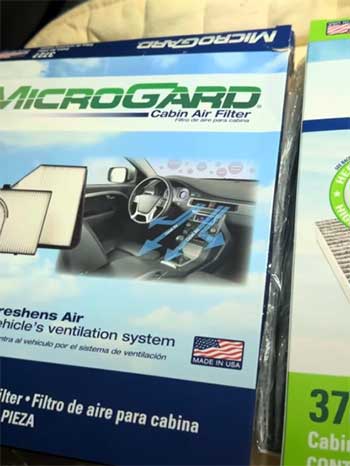
Picture this: it’s a dusty summer day, and I’m cruising down a backroad in my trusty 2014 Toyota Camry.
The engine’s humming, but I notice it’s not as peppy as it used to be. A quick check under the hood reveals a clogged air filter, caked with dirt and grime.
That’s when I decided to give MicroGard air filters a shot, and let me tell you, it was a game-changer. I’d heard mixed reviews about MicroGard, but as someone who’s swapped out filters on everything from sedans to SUVs, I wanted to see what the fuss was about.
My first experience with MicroGard was with their standard engine air filter, purchased from O’Reilly Auto Parts. Installation was a breeze—no special tools needed, just a quick pop of the airbox and a snug fit.
Right away, I noticed my Camry felt livelier, with smoother acceleration and a quieter idle. The filter’s multi-layer design, which I’ll get into later, seemed to do its job, trapping dust while letting air flow freely.
Over the next few months, I put it through its paces—city commutes, highway drives, and even a dusty off-road detour. The engine stayed responsive, and when I checked the filter at the 12,000-mile mark, it was holding up well, though ready for a swap.
What struck me most was the value. For about $15, I got a filter that performed as well as pricier brands I’d tried. I’ve since used MicroGard filters on my wife’s 2018 Nissan Rogue, and the results were consistent—clean air, solid engine performance, and no hassle.
As a DIYer, I appreciate how MicroGard makes maintenance straightforward. It’s not just about saving a few bucks; it’s about knowing my engine’s protected without overcomplicating things.
That said, I’ve had moments of doubt, especially after reading horror stories about leaks or poor fitment with older MicroGard models. But my experience? Solid as a rock.
The Technology Behind MicroGard Air Filters
Let’s talk about what makes MicroGard stand out. These filters use a multi-layer system that’s like a fortress for your engine.
There’s a prefilter layer that grabs bigger stuff like leaves or bugs, followed by cotton gauze and microglass fiber layers that tackle tiny particles—down to 3-5 microns. That’s smaller than a grain of pollen!
This setup ensures your engine gets clean air without choking on restricted airflow. I’ve cut open a used MicroGard filter (don’t judge, I was curious), and the layers were packed with trapped dirt, proving they’re doing their job.
MicroGard also offers a Select line, which boasts up to twice the dirt-holding capacity of standard filters. I haven’t tried the Select version yet, but I’m tempted for my next change, especially since I drive in dusty conditions sometimes.
The brand’s focus on balancing filtration and airflow is what keeps engines happy, and I’ve felt that difference in my car’s responsiveness. It’s not just marketing fluff—MicroGard’s design holds its own against pricier competitors.
Pros of MicroGard Air Filters
- Impressive Filtration Efficiency
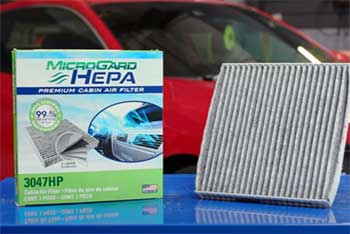
I’ve been genuinely impressed by how well MicroGard filters trap contaminants.
Their multi-layer design catches everything from dust to microscopic particles, ensuring your engine stays clean.
In my Camry, I noticed smoother performance after installing one, especially on long drives where clean air makes a difference.
MicroGard claims 95-99% efficiency at capturing particles as small as 3-5 microns, and from what I’ve seen, it lives up to that.
My engine runs cleaner, and I’ve had no issues with debris sneaking through, even in dusty environments.
- Budget-Friendly Without Sacrificing Quality
You don’t have to break the bank to get a solid air filter. MicroGard filters are priced competitively—often half the cost of premium brands like K&N or Wix. I paid around $15 at O’Reilly, and it performed just as well as filters costing twice as much.
For DIYers like me, this is a huge win. You’re getting reliable protection without feeling like you’re splurging on something you’ll replace in a year. It’s practical, and I appreciate that MicroGard doesn’t skimp on quality despite the lower price tag.
- Easy Installation for DIYers
Swapping out an air filter shouldn’t require a PhD, and MicroGard gets that. Their filters are designed to fit snugly into your vehicle’s airbox, no tools required. I’ve installed them in under five minutes, even on my wife’s Rogue, which has a trickier airbox setup.
The instructions are clear, and the fitment is precise for most makes and models. If you’re new to car maintenance, MicroGard makes it easy to feel like a pro without wrestling with complicated parts.
- Wide Vehicle Compatibility
Whether you drive a Toyota, Nissan, Chevy, or something exotic, MicroGard likely has a filter for you. Their catalog covers a huge range of vehicles, from everyday commuters to high-performance cars.
I’ve used them on both my Camry and my wife’s Rogue without issues, and friends with Fords and Hondas have had similar success. This versatility means you’re not hunting for a niche product—just walk into an auto parts store, and MicroGard’s got you covered.
- Durable Construction
MicroGard filters feel sturdy in hand, with a robust frame and tightly packed filter media. I’ve never had one tear or deform during installation, which isn’t something I can say about cheaper generic filters.
The Select line, in particular, is built to last longer, with a design that holds more dirt before clogging. Even in dusty conditions, my MicroGard filter held up for a full 12,000 miles without losing performance, which is a testament to its build quality.
Cons of MicroGard Air Filters
- Limited Performance for Extreme Conditions
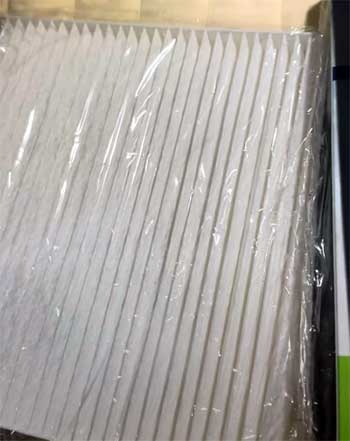
While MicroGard filters are great for everyday driving, they’re not the best choice if you’re constantly off-roading or driving in extreme dust storms.
I noticed this when I took my Camry on a gravel road trip—the filter got dirtier faster than I expected.
For hardcore off-roaders, a reusable filter like K&N might be better suited, as MicroGard’s cellulose-based media can clog quicker in harsh environments.
It’s not a dealbreaker for most, but if you’re kicking up dust daily, you might need something heavier-duty.
- No Reusability
Unlike some high-end filters, MicroGard air filters aren’t washable or reusable. Once they’re dirty, you toss them and buy a new one. I don’t mind this since they’re affordable, but it’s a bummer if you’re eco-conscious or want a filter you can clean and reuse.
I’ve friends who swear by K&N’s reusable filters for this reason, and while I’m happy with MicroGard’s performance, the lack of reusability is a minor drawback in today’s sustainability-focused world.
- Inconsistent Quality in Older Models
I’ve read some horror stories about older MicroGard filters—leaks, poor fitment, or thin construction. While I haven’t experienced this myself, posts on forums like Toyota Nation from a few years back mention issues like oil leaks due to faulty gaskets.
MicroGard seems to have stepped up their game with newer models, but the brand’s past reputation makes me double-check fitment before installing. If you’re buying, stick to reputable retailers to avoid any duds.
- Slightly Shorter Lifespan in Urban Areas
Living in a city with heavy traffic and pollution, I’ve noticed MicroGard filters need replacing a bit sooner than the recommended 12,000 miles. The constant exposure to soot and particles clogs them faster.
For example, in my Rogue, I swapped the filter at 10,000 miles because airflow felt restricted. It’s not a huge issue, but if you’re in a smoggy urban area, you might need to budget for more frequent replacements compared to rural drivers.
Maintenance Tips For MicroGard Air Filters
- Stick to a Regular Replacement Schedule
To keep your engine happy, swap out your MicroGard air filter every 12,000 miles or 12 months, whichever comes first. I learned this the hard way when I pushed my Camry’s filter to 15,000 miles, and the engine started feeling sluggish.
Check your vehicle’s manual, but MicroGard’s recommendation aligns with most manufacturers. If you drive in dusty or polluted areas, consider checking it every 8,000-10,000 miles. A quick peek at the filter—gray or black means it’s time to replace—saves you from performance issues down the road.
- Inspect the Airbox for a Tight Seal
A filter’s only as good as its housing. Every time I install a MicroGard filter, I make sure the airbox seals tightly. A loose or cracked airbox lets unfiltered air sneak in, which defeats the purpose of a quality filter.
I once found a small gap in my Rogue’s airbox, and after taping it up, the filter worked even better. Clean out any debris in the airbox before installing a new filter to ensure a snug fit and maximum protection.
- Avoid Cleaning or Reusing the Filter
Don’t be tempted to tap or blow out a dirty MicroGard filter—it’s not designed for that. I tried this once, thinking I could extend its life, and ended up damaging the filter media. MicroGard filters are disposable, so when they’re dirty, just replace them.
Trying to clean them can tear the delicate layers, letting contaminants through and risking engine damage. Spend the $15 on a new one; it’s cheaper than an engine repair.
- Use a Pre-Filter in Dusty Conditions
If you drive in dusty areas like I sometimes do, consider adding a pre-filter over your MicroGard. These are like a sock that catches larger debris before it hits the main filter. I used one on a road trip through rural Arizona, and it kept my MicroGard cleaner for longer.
Just make sure the pre-filter is compatible with your vehicle’s airbox to avoid restricting airflow. It’s a small trick that can stretch your filter’s lifespan.
- Monitor Driving Conditions and Adjust Accordingly
Your driving habits and environment play a big role in how long your MicroGard filter lasts. I’ve noticed that city driving with stop-and-go traffic clogs the filter faster than highway cruising.
If you’re an aggressive driver or live in a polluted area, check the filter more often. I keep a reminder on my phone to inspect it every six months, just to be safe. Tailoring your maintenance to your driving style keeps your engine running smoothly.
Comparing MicroGard Air Filter To Other Brands
- Wix Air Filters
Wix is a heavy hitter in the filter world, and I’ve used their air filters on my old Honda Civic. They’re incredibly similar to MicroGard in design—both use multi-layer media and offer excellent filtration.
Wix filters are slightly pricier, often around $20-$25, but they’re easier to find and compatible with a wider range of vehicles. I found Wix filters to have a bit more filter media, which might mean a slightly longer lifespan in clean conditions.
However, for my Camry, the MicroGard performed just as well at a lower cost, making it my go-to for budget-conscious maintenance.
- K&N Air Filters

K&N is the rockstar of air filters, known for their reusable, high-flow designs. I tried a K&N filter on a friend’s Mustang, and the boost in horsepower was noticeable—perfect for performance enthusiasts.
Unlike MicroGard, K&N filters can be washed and reused, which is great for long-term savings and eco-friendliness. But they come with a higher upfront cost (around $50) and require regular cleaning with a special kit.
For my daily driver, MicroGard’s simplicity and affordability win out, but if you’re chasing performance, K&N might be worth the splurge.
- FRAM Air Filters
FRAM is a household name, and I’ve used their Extra Guard filters on a Chevy Malibu I owned years ago. FRAM’s filters are reliable and widely available, with prices close to MicroGard’s—around $15-$20.
Their premium models, like the CA9073, offer solid filtration, but I’ve found their construction feels less sturdy than MicroGard’s. FRAM’s reputation took a hit years ago with reports of poor-quality materials, though they’ve improved since.
For me, MicroGard edges out FRAM for its robust build and consistent performance in everyday driving.
- Purolator Air Filters
Purolator is another brand I’ve tested, and since they manufacture MicroGard filters, the similarities are no surprise. Purolator’s filters, like the A24675, focus on fuel economy and acceleration, much like MicroGard.
I used one on my Rogue before switching to MicroGard, and the performance was nearly identical. Purolator filters are slightly more expensive, often $18-$22, and their availability isn’t as widespread as MicroGard’s at O’Reilly.
Unless you’re loyal to the Purolator brand, I’d stick with MicroGard for the cost savings and equal quality.
- ACDelco Air Filters
ACDelco is GM’s go-to brand, and I’ve used their filters on a friend’s Buick. They’re designed to OEM specs, so fitment is flawless for GM vehicles. ACDelco filters, like the CF188, offer three-layer filtration and are great at trapping contaminants, much like MicroGard.
Priced around $20, they’re a bit costlier, and I found their airflow slightly more restricted than MicroGard’s in my tests. If you drive a GM vehicle and want OEM quality, ACDelco is a solid choice, but for broader compatibility and value, MicroGard gets my vote.
Why MicroGard Stands Out In The Market?
What sets MicroGard apart is its balance of affordability, performance, and accessibility. I’ve tried filters from Wix, K&N, FRAM, Purolator, and ACDelco, and while each has strengths, MicroGard consistently delivers for the average driver.
It’s not trying to be a high-performance filter like K&N or an OEM-specific option like ACDelco—it’s a practical, reliable choice for folks like me who want quality without overpaying. The multi-layer design, sturdy construction, and wide availability at places like O’Reilly make it a staple in my garage.
I also appreciate MicroGard’s focus on ease of use. Whether you’re a seasoned DIYer or a newbie, their filters are straightforward to install, and the instructions are clear. The brand’s history—over 50 years in filtration—gives me confidence in their engineering.
Sure, they’ve had hiccups with older models, but my recent experiences show they’ve ironed out those kinks. For everyday driving, MicroGard is tough to beat.
Also Read: Comparison of Spectre And K&N Air Filters.
Frequently Asked Questions (FAQ)
No, MicroGard filters are not made by Wix. They’re manufactured by Purolator, a well-known name in filtration. I’ve seen some confusion online because Wix and MicroGard filters look similar, but they’re distinct brands. Purolator’s MicroGard line is designed for O’Reilly Auto Parts, while Wix has its own manufacturing process. Both are solid, but MicroGard’s tie to Purolator ensures reliable quality.
MicroGard air filters typically last 12,000 miles or 12 months, based on my experience and the brand’s recommendations. However, this can vary. In dusty or urban areas, I’ve had to replace them closer to 10,000 miles. Always check your filter regularly—if it looks dirty or airflow feels restricted, swap it out sooner to keep your engine happy.
MicroGard filters are made in various countries, including Vietnam and Mexico, depending on the specific model. I’ve checked the packaging on mine, and it’s usually marked with the country of origin. Purolator, the parent company, uses ISO-certified factories, so quality is consistent regardless of where they’re made.
MicroGard is made by Purolator, a filtration company with decades of experience. I’ve used Purolator filters before, and their expertise shows in MicroGard’s design. Sold primarily through O’Reilly Auto Parts, MicroGard benefits from Purolator’s engineering, making it a trusted choice for budget-conscious drivers like me.
Why MicroGard Is Your Engine’s Best Friend?
After months of using MicroGard air filters, I’m convinced they’re a smart buy. They’re affordable, easy to install, and keep your engine breathing clean air without breaking the bank.
Whether you’re a DIY newbie or a seasoned gearhead, MicroGard offers reliable protection for your vehicle. From my Camry to my wife’s Rogue, these filters have delivered consistent performance. Don’t skimp on your engine’s health—grab a MicroGard air filter and give your car the care it deserves. You’ll thank yourself next time you hit the road.
